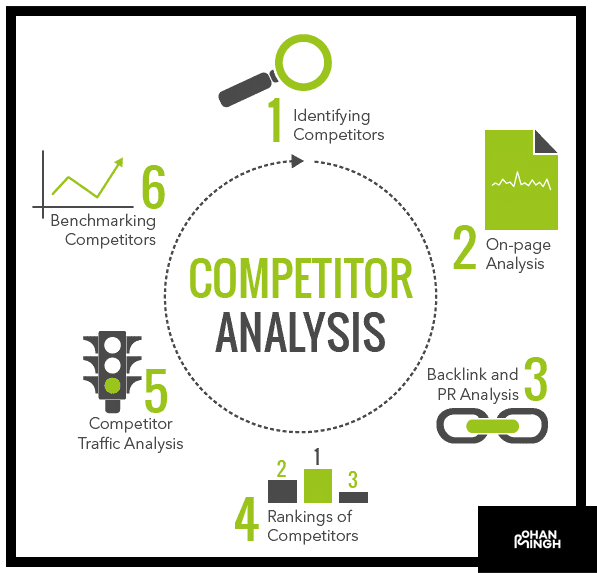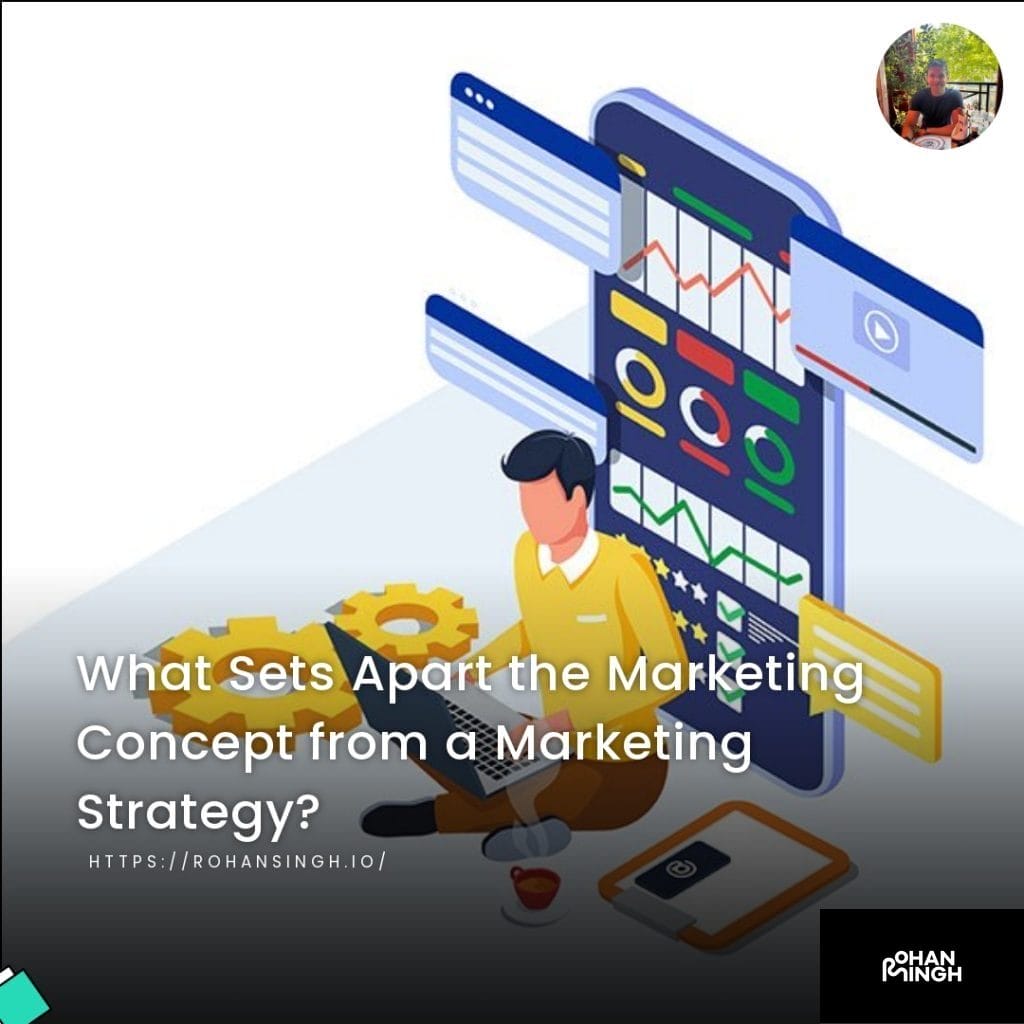How do marketing strategies differ from marketing techniques?

What is a Marketing Strategy?
At the heart of every successful marketing campaign lies a well-crafted marketing strategy. A marketing strategy is a comprehensive plan that outlines the approach and tactics a business will use to achieve its marketing goals. It involves careful analysis of the target audience, market trends, and competition to develop a roadmap for success. A strong marketing strategy not only helps businesses understand their customers and their needs but also enables them to position their brand effectively in the market.
Table of Contents
ToggleA marketing strategy goes beyond simply promoting a product or service; it encompasses the overall direction and goals of a business. It sets out the key objectives, target market segments, and positioning the business wants to achieve. A well-defined marketing strategy enables organizations to make informed decisions about their marketing mix, such as pricing, distribution channels, and promotional activities. It provides a framework for businesses to align their marketing efforts with their long-term business goals and create a consistent and memorable brand image.
Overall, a marketing strategy is a guiding light for a business, providing a clear direction and purpose for all marketing activities. It is a vital component in driving business growth, as it helps businesses understand their customers, differentiate themselves from the competition, and make strategic decisions that will ultimately lead to success.
What is a Marketing Technique?
A marketing technique is a specific method or approach used to execute marketing tactics and achieve marketing objectives. While a marketing strategy outlines the overall direction and goals of a business, a marketing technique focuses on the specific actions and tools used to implement that strategy. It is important to understand the distinction between a strategy, a tactic, and a technique to effectively plan and execute marketing campaigns.
For example, a marketing strategy may be to increase brand awareness and reach a new target audience. One tactic to achieve this strategy could be to launch a social media campaign. To implement this tactic, specific techniques such as creating engaging content, using targeted keywords, and utilizing social media management tools like Hootsuite or Buffer can be employed.
Marketing techniques can vary depending on the specific goals and target audience of a business. In digital marketing, common techniques include search engine optimization (SEO), email marketing, content marketing, and social media advertising. In traditional marketing, techniques may include direct mail campaigns, print advertising, and television commercials.
The purpose of marketing techniques is to effectively reach and engage the intended audience, generate leads, drive sales, and ultimately achieve the desired marketing goals. By carefully selecting and using the right techniques, businesses can optimize their marketing efforts and maximize their return on investment. Considering marketing techniques when creating a marketing plan is essential as it allows for a more targeted and effective approach to reaching and attracting customers. As the marketing landscape continues to evolve, staying up-to-date on the latest techniques and leveraging marketing tools is crucial for success.
Let's talk about your future project!
Eager to collaborate on your upcoming endeavor? Let's explore and ignite the potential of your next big idea, shaping a promising future together!
Differences between Strategies and Techniques
In the world of marketing, it’s important to distinguish between strategies and techniques. While they are often used interchangeably, they are two different concepts with unique roles to play in the overall marketing plan.
A marketing strategy is essentially a high-level plan that guides all marketing activities toward achieving specific business goals. It provides the framework and direction for the entire marketing effort. For example, a strategy may be to increase brand awareness and reach a new target audience. This would involve determining the best marketing channels to use, the key messages to convey, and the overall approach to take.
On the other hand, marketing techniques refer to the specific actions and activities that are used to execute a particular marketing strategy. These are the tangible steps that marketers take to implement the strategy and achieve the desired outcomes. For instance, in the aforementioned strategy to increase brand awareness, specific techniques could include creating engaging social media posts, using targeted advertising, and engaging with followers to build a loyal customer base.
In essence, strategies provide the big-picture view and overall plan, while techniques are the hands-on tools and tactics used to bring that plan to life. They work hand in hand to drive marketing success and achieve business goals. By understanding the difference between strategies and techniques, marketers can create more effective and targeted marketing campaigns that yield measurable results.

Developing an Effective Marketing Strategy
In today’s highly competitive business landscape, developing an effective marketing strategy is crucial for the success of any organization. A marketing strategy acts as a roadmap that guides all marketing efforts and ensures that they are aligned with the overall business goals. It serves as a blueprint for identifying target customers, reaching them through the right channels, and positioning the brand effectively. Developing an effective marketing strategy requires a deep understanding of the target audience, market trends, and the competitive landscape. It involves conducting thorough research to gain insights into consumer behavior, preferences, and needs. By understanding the target audience, businesses can tailor their marketing messages and tactics to resonate with their ideal customers.
An effective marketing strategy also involves setting clear and measurable objectives that are aligned with the business goals. These objectives serve as benchmarks for tracking the success of the strategy and allow for adjustments as needed. Furthermore, a robust marketing strategy considers both online and offline marketing channels to maximize reach and impact. With the rapid advancement of technology, digital marketing tools have become essential for reaching target customers and analyzing the effectiveness of marketing campaigns. A well-crafted marketing strategy takes advantage of these tools and leverages data and analytics to refine marketing tactics and improve outcomes. Ultimately, developing an effective marketing strategy is a continuous process that requires constant monitoring, evaluation, and adaptation to stay ahead in today’s dynamic business environment.
Analyze Your Customers and Target Market
To develop a successful marketing strategy, it is crucial to analyze your customers and target market thoroughly. This involves conducting a comprehensive market analysis to gain insights into the needs, preferences, and behaviors of your potential customers. By understanding your target market, you can tailor your marketing efforts to effectively reach and engage with them.
One effective tool for analyzing your customers and target market is the SWOT analysis. This helps identify market opportunities, sizing, segments, and potential impacts such as trends, economy, and seasonality. By conducting a SWOT analysis, you can uncover your strengths, weaknesses, opportunities, and threats, enabling you to develop strategies that capitalize on your strengths and opportunities while mitigating your weaknesses and threats.
Additionally, it is important to identify customer success metrics to understand how different customer groups measure success. This can include metrics such as customer satisfaction, retention rate, lifetime value, and referral rate. By understanding what success looks like for your customers, you can align your marketing efforts to meet their needs and expectations.
Undertaking a mutually exclusive and collectively exhaustive (MECE) approach is also critical in understanding how different customer groups are served in the market. This helps identify whether certain groups are underserved, overserved, or appropriately served, which is crucial in devising a growth strategy that targets untapped market opportunities.
To achieve market success over time, it is important to focus on a bottom-up, granular, and stable lens. This means understanding the nuances of your target market at a detailed level and developing strategies that cater to their specific needs and preferences. By taking this approach, you can ensure that your marketing efforts are not only effective in the short term but also sustainable in the long run.
In conclusion, analyzing your customers and target market is a fundamental step in developing a successful marketing strategy. By conducting market analysis, using tools like SWOT analysis, and understanding customer success metrics, you can gain valuable insights that inform your marketing efforts. Adopting a MECE approach and focusing on a bottom-up, granular, and stable lens will help you achieve market success over time.
Identify Your Unique Selling Proposition (USP)
Your Unique Selling Proposition (USP) is the key to setting yourself apart from your competitors in the market. It is your secret weapon, the reason why customers should choose your product or service over all the other options out there. Your USP should be unique, compelling, and valuable to your target audience.
To identify your USP, you need to consider what benefits your product or service provides that others do not. What makes you stand out? How do you solve a problem that your competitors have failed to address? Once you have determined your USP, it should be used consistently and prominently in all your marketing efforts to differentiate yourself and capture the attention of your target audience.
A strong USP can make a huge difference in the success of your marketing campaigns. It helps you communicate the value you bring to the table and why customers should choose you. Remember, your USP should be clear and concise, and it should highlight the unique qualities and advantages of your product or service. By effectively communicating your USP, you can gain a competitive edge and attract more potential customers to your business.

Analyze Your Competitors’ Strategies and Tactics
Analyzing your competitors’ strategies and tactics is a crucial step in developing a successful marketing strategy. It allows you to gain valuable insights into what is working in your industry and identify areas where you can differentiate yourself. By understanding your competitors’ strengths, weaknesses, and market share, you can craft a marketing plan that positions you for success.
One important factor to consider when analyzing your competitors is market share comparison. This helps you understand how your business stacks up against the competition and identify growth opportunities. By comparing your market share to that of your competitors, you can identify areas where you may be falling behind and develop strategies to capture a larger portion of the market.
Another factor to consider is differentiation. What sets you apart from your competitors? By identifying your unique selling proposition (USP), you can position yourself in a way that appeals to your target audience and better meets their needs. Your USP should be woven into your marketing strategy to ensure consistency and highlight the value you provide.
Barriers to entry are also important to consider. Are there any obstacles that prevent new competitors from entering the market? Understanding these barriers can help you maintain a competitive advantage and protect your market share.
To study your competitors’ activities, it’s essential to conduct a keyword analysis. This involves examining the keywords and phrases they’re targeting in their content, as well as the keywords they’re bidding on in paid advertising. This information can help you identify gaps in the market and develop strategies to target untapped opportunities.
Additionally, studying your competitors’ social media presence can provide valuable insights into their marketing tactics. By analyzing their social media campaigns and engagement levels, you can gain ideas for your own social media marketing strategy and find ways to differentiate yourself.
By thoroughly analyzing your competitors’ strategies and tactics, you can develop a robust marketing strategy that positions you for success in your target market. Remember, it’s not about copying what they’re doing, but rather understanding their approach and finding ways to differentiate yourself to capture the attention and loyalty of your target audience.
Set Goals and Objectives for your Strategy
Setting goals and objectives is a crucial step in developing an effective marketing strategy. These targets serve as a roadmap for your marketing efforts, guiding your team’s actions and aligning them with the long-term vision of your business. By clearly defining what you aim to achieve, you can measure the success of your marketing tactics and make necessary adjustments along the way.
When setting goals and objectives, it’s important to make them SMART: specific, measurable, achievable, relevant, and time-bound. For example, instead of simply aiming to increase sales, set a specific target like increasing sales figures by 20% within the next quarter. This way, you have a clear metric to work towards and can track your progress.
Some common marketing goals and objectives include expanding the customer base, improving brand awareness, increasing customer loyalty, or enhancing online engagement. Each of these objectives should be measurable and tied to specific key performance indicators (KPIs). This allows you to track your progress and determine the effectiveness of your marketing efforts.
Resource allocation is also a critical consideration when setting goals and objectives. It’s important to allocate the right resources, whether it’s budget, time, or manpower, to achieve these goals. By understanding the resources required and distributing them effectively, you can ensure that your marketing strategy is supported and has the best chance of success. Remember, setting goals and objectives should be an ongoing process, constantly reviewing and adapting your strategy as needed to stay on track to achieve your business objectives.
Implementing Effective Marketing Techniques
Once you have established your marketing goals and objectives, the next crucial step is to determine the most effective marketing techniques to achieve them. It’s important to understand the distinction between marketing strategies and marketing techniques. While marketing strategy refers to the overall approach and plan to achieve your goals, marketing techniques are the specific tactics and actions you take to execute that strategy.
To implement effective marketing techniques, you need to first identify your target audience. This enables you to tailor your marketing messages and choose the most appropriate channels to reach your potential customers. With a clear understanding of your target audience, you can then select the marketing techniques that are most likely to resonate with them.
One popular marketing technique is content marketing. By creating valuable and relevant content, such as blog posts or white papers, you can establish your expertise in your industry and build trust with your audience. Another effective technique is social media marketing, which allows you to engage with your target customers on platforms they already use and drive brand awareness.
To measure the success of your marketing techniques, it’s essential to track key performance indicators (KPIs) such as website traffic, conversion rates, or social media engagement. This data will help you evaluate the effectiveness of your techniques and make data-driven decisions moving forward. Remember, implementing effective marketing techniques requires continuous monitoring, testing, and adjustment to ensure you are maximizing your marketing efforts.

Social Media Strategies & Tactics
Social media has become an integral part of any successful marketing strategy. However, it’s important to understand that having a presence on social media platforms is not enough. You must have a well-defined social media strategy in place to truly maximize its potential. A social media strategy is an overall plan that outlines your goals, target audience, and the messages you want to convey across various social media platforms.
Unlike strategy, social media tactics are the specific actions and techniques you employ to execute your strategy. It involves creating shareable content that resonates with your audience, engaging with and responding to comments, running targeted social media ads to reach a wider audience, and using relevant hashtags to increase visibility and discoverability.
To effectively leverage social media, it is essential to create a comprehensive plan that sets specific goals and objectives. By identifying your target audience and tailoring your messages to resonate with them, you can optimize your social media presence to generate meaningful engagement and drive results. Remember that social media is constantly evolving, so it’s important to stay updated with new trends and tools to ensure your tactics are effective and aligned with your overall marketing strategy. So, take the time to develop a solid social media strategy, and always be willing to adapt and refine your tactics to stay ahead in the ever-changing social media landscape.
Final Thoughts
When it comes to marketing, both strategy and technique play vital roles in achieving success. While marketing strategy is the overall plan that outlines your goals, target audience, and how you aim to achieve them, marketing technique focuses on the specific actions and tactics to execute that strategy. In essence, strategy provides direction, while technique provides the means to reach your goals.
Having a well-defined marketing strategy is crucial for any business. It helps align your marketing efforts with your overall business goals and ensures that your tactics are targeted toward your desired audience. On the other hand, marketing techniques are the tools and methods you utilize to implement your strategy effectively. These can range from content marketing, social media campaigns, email marketing, SEO optimization, and more.
Ultimately, the success of your marketing efforts lies in the synergy between strategy and technique. A robust marketing strategy provides a solid foundation and roadmap, while effective techniques and execution bring it to life. By combining the two, businesses can engage their target audience, increase brand visibility, generate leads, and ultimately drive growth.
In the ever-evolving world of marketing, it is important to continuously analyze and optimize both your strategy and technique. Keep a close eye on industry trends, consumer behavior, and emerging marketing tools to ensure your approach remains relevant and effective. Remember, a carefully crafted strategy supported by innovative techniques can be the key to unlocking your business’s full marketing potential.
FAQs
What is the difference between marketing strategy and marketing technique?
Marketing strategy and marketing technique are both crucial components of a successful marketing plan, but they serve different purposes. Marketing strategy refers to the overall plan and direction that guides your marketing efforts. It involves defining your goals, target audience, and how you plan to reach them. On the other hand, marketing technique involves the specific actions and tactics you use to implement your strategy effectively, such as content marketing, social media campaigns, SEO optimization, and more.
What are some best practices for marketing strategy and techniques?
When it comes to marketing strategy, it’s important to align your efforts with your business goals and target audience. Conduct market research to understand your customers’ needs and preferences, and create a unique value proposition that sets you apart from your competitors. As for marketing techniques, there are various options to choose from depending on your goals. Content marketing, for example, is a powerful technique that involves creating relevant and valuable content to attract and engage your target audience. Social media campaigns can help increase brand visibility and drive engagement. Email marketing is another effective technique for nurturing leads and staying connected with customers. It’s essential to continuously analyze and optimize your strategies and techniques based on data and feedback to ensure the best results.
What is a marketing strategy?
A marketing strategy is like a compass that guides a business in its efforts to connect with customers and turn them into paying customers. It’s the overall plan or game plan that defines how a company will position itself in the market and reach its target audience effectively.
A well-crafted marketing strategy takes into account the company’s value proposition – what makes it unique and different from its competitors. It considers the target customer demographics and identifies the key messages that will resonate with them. It also encompasses the value that the company offers – how it solves a customer’s problem or fulfills a need.
Having a clear marketing strategy is crucial for businesses because it outlines the path and direction they need to take to achieve their marketing goals. It ensures that the company’s messaging and activities align with its business objectives. A strong marketing strategy provides a framework for decision-making, ensuring that every marketing effort contributes to the overall success of the business. It helps businesses stay focused and consistent in their communication and gives them a competitive edge in the market.
In summary, a marketing strategy serves as the foundation for all marketing activities. It sets the tone for how a company will engage with its target customers, communicate its value, and ultimately drive business growth.
Marketing strategy vs tactics: What is the difference?
Marketing strategy and tactics are two interrelated, yet distinct parts of a company’s overall marketing efforts. While the terms may seem interchangeable, they refer to different things, and understanding the nuances between the two is essential for effective marketing.
A marketing strategy is a big-picture plan that outlines the company’s long-term goals and the path it will take to achieve them. It involves careful analysis of the target audience, market trends, and competitor landscape. The strategy sets the direction for the entire marketing approach and provides a framework for decision-making. For example, a strategy might focus on increasing market share by targeting a specific demographic through content marketing and social media campaigns.
On the other hand, marketing tactics are the specific actions and execution steps taken to support the overarching strategy. These are the tangible activities that are implemented to reach the desired goals. Tactics can include email marketing, SEO optimization, event marketing, or any other targeted efforts to engage with potential customers. Tactics are more short-term and are implemented to directly support the strategy.
In summary, the key difference between marketing strategy and tactics lies in the scope and timeframe. A strategy outlines long-term goals and the plan to achieve them, while tactics are the specific steps taken to execute the strategy and reach those goals. Both are crucial components of a comprehensive marketing plan, with the strategy providing the direction and the tactics providing the execution support. It is the combination of a well-crafted strategy supported by effective tactics that leads to successful marketing efforts.
How to Create a Marketing Strategy?
Creating a marketing strategy is a crucial step in establishing a strong foundation for your business. It involves a deep understanding of your target market, their needs, and how to effectively reach them. Start by defining your ideal customer or target market. Who are they? What are their pain points? Understanding their demographics, behaviors, and preferences will help you tailor your marketing efforts specifically to them.
Next, it’s important to identify industry trends and your competitive position. This will help you formulate your business goals and differentiate yourself from competitors. Look for gaps in the market that you can fill and brainstorm ways to stand out from the crowd. What unique selling proposition can you offer that sets you apart?
In addition to short-term goals, consider your long-term goals. Where do you see your business in the next few years? This will help shape your marketing strategy and ensure that your efforts are aligned with your vision. It’s also crucial to assess whether you have adequate funds to achieve these goals. A solid marketing strategy requires financial resources, so make sure you have a budget in place to support your initiatives.
Creating a marketing strategy requires careful research, analysis, and planning. By understanding your target market, and industry trends, and setting clear goals, you can develop a robust strategy that will guide your marketing efforts towards success. Remember, a well-crafted strategy serves as a roadmap for your marketing activities, providing a strong foundation for your business growth.
What is the difference between marketing strategy and techniques?
Marketing strategy and marketing techniques are two essential components of a successful marketing plan, but they differ in their focus and approach. Let’s start by defining each term.
A marketing strategy is a high-level plan that outlines the overall goals and objectives of your marketing efforts. It involves analyzing your target audience, understanding their needs and preferences, and determining the most effective ways to reach and engage with them. A well-defined marketing strategy serves as the foundation for your marketing activities and guides your decision-making process.
On the other hand, marketing techniques refer to the specific tactics and actions you employ to execute your marketing strategy. These techniques can include a wide range of activities such as content marketing, social media campaigns, email marketing, search engine optimization (SEO), and more. They are the actionable steps taken to implement your strategy and drive desired outcomes.
To illustrate the difference, let’s consider an example. Imagine you own a small bakery and want to increase your customer base. Your marketing strategy may involve targeting health-conscious consumers who value organic and eco-friendly products. As part of your strategy, you may decide to use content marketing to create blog posts and white papers highlighting the benefits of organic ingredients. This is your strategy.
Now, to put your strategy into action, you use marketing techniques such as creating engaging social media posts featuring your bakery’s eco-friendly practices, running email marketing campaigns to promote your organic products, and optimizing your website for search engines to attract potential customers searching for organic bakeries in your area. These techniques support and align with your marketing strategy.
It is important to note that a solid marketing strategy is crucial before implementing marketing techniques. Without a clear plan, your techniques may lack direction and fail to achieve the desired results. By developing a comprehensive marketing strategy first, you can ensure that your marketing techniques are aligned with your goals and effectively reach your target audience.
What are marketing techniques?
Marketing techniques refer to the specific methods and actions used to implement a marketing strategy. While a marketing strategy outlines the overall goals and objectives, marketing techniques are the tangible steps taken to achieve those goals. These techniques can vary widely depending on the specific marketing goals and target audience.
One example of a marketing technique is content marketing. This technique involves creating and sharing valuable and relevant content to attract and engage a target audience. By producing blog posts, white papers, and videos that provide useful information or entertainment, businesses can position themselves as experts in their industry and build trust with their audience.
Another important marketing technique is social media marketing. With billions of people active on various social media platforms, businesses can leverage this powerful tool to reach and engage with their target audience. By creating engaging posts, running targeted ad campaigns, and fostering a sense of community, businesses can increase brand awareness, drive website traffic, and generate leads.
Email marketing is yet another effective marketing technique. By building an email list of potential customers and sending regular newsletters or promotional offers, businesses can nurture leads and turn them into paying customers. Email marketing allows for personalized communication and can be highly targeted, leading to higher conversion rates.
Overall, marketing techniques are crucial in achieving marketing goals as they provide the actionable steps needed to bring a marketing strategy to life. By utilizing various techniques such as content marketing, social media marketing, and email marketing, businesses can reach their target audience, deliver their message effectively, and drive desired outcomes.
What are the five marketing techniques?
Marketing techniques are specific tactics and methods that businesses employ to attract, engage, and retain customers. While marketing strategies focus on long-term goals and overall plans, techniques are the specific actions taken to implement those strategies and achieve desired outcomes. Businesses must use techniques that align with their specific objectives, as this ensures that their marketing efforts are targeted and effective.
The top five marketing techniques that businesses can use to attract and retain customers are content marketing, social media marketing, email marketing, influencer marketing, and search engine optimization (SEO).
Content marketing involves creating and sharing valuable and relevant content through various mediums such as blog posts, videos, and white papers. By providing useful information or entertainment, businesses can position themselves as industry experts and build trust with their target audience.
Social media marketing taps into the power of platforms like Facebook, Twitter, and Instagram, allowing businesses to reach and engage with their target audience on a personal level. By creating engaging posts, running targeted ad campaigns, and fostering a sense of community, businesses can increase brand awareness, drive website traffic, and generate leads.
Email marketing involves building an email list of potential customers and sending regular newsletters or promotional offers. This technique allows for personalized communication and can be highly targeted, leading to higher conversion rates.
Influencer marketing leverages the popularity and credibility of social media influencers to promote a brand or product. By partnering with relevant influencers, businesses can reach a larger audience and build trust through association.
Search engine optimization (SEO) is the process of improving a website’s visibility on search engine results pages. By optimizing website content and structure, businesses can increase organic traffic and attract targeted visitors who are actively searching for their products or services.
By utilizing these top marketing techniques, businesses can effectively attract and retain customers, ultimately helping them achieve their business objectives and drive growth.
Why are strategies and techniques important?
Marketing strategies and techniques play a crucial role in the success of a business. They provide a roadmap and direction for reaching marketing goals and propelling the business in the right direction. Without a clear strategy, businesses can find themselves lost in a sea of marketing efforts that lack focus and fail to connect with their target audience.
Strategies set the foundation for effective marketing by identifying the target audience and determining the best ways to reach and engage with them. They outline the overall approach and objectives, guiding businesses in creating content and campaigns that resonate with their audience and generate sales. Techniques, on the other hand, are the specific actions and tactics employed to execute the strategy and achieve its goals. They involve the use of different marketing tools and channels, such as content marketing, social media marketing, and email marketing, to engage and convert potential customers.
The key difference between strategy and tactics lies in their level of planning and scope. Strategy is the big-picture plan that sets the course, while tactics are the specific actions taken to implement the strategy effectively. Without a clear strategy, businesses may resort to random marketing tactics that lack direction and fail to yield desired results. Businesses must have a well-defined marketing strategy that aligns with their overall business goals and guides their marketing efforts toward success.
In conclusion, strategies and techniques are extremely important in marketing as they provide the roadmap and direction for businesses to attract and engage with their target audience effectively. They ensure marketing efforts align with business goals and help generate sales and success. So, whether you’re starting a new business or looking to grow an existing one, it’s essential to have a clear marketing strategy in place that outlines your target audience, goals, and the tactics you’ll use to achieve them.
What Marketing Strategy Did Cheetos Employ for Plants vs. Zombies Collaboration?
Rohan Singh | May 1, 2024 | Acquisition What Marketing Strategy Did Cheetos Employ for Plants vs. Zombies Collaboration? Background on Cheetos Cheetos, a popular brand of cheese-flavored snacks, has made a name for itself with its bold and playful marketing strategies. Known for its irreverent and creative campaigns, Cheetos has consistently found unique ways […]
What Marketing Strategy Did Cheetos Employ for Plants vs. Zombies Collaboration?
Rohan Singh | May 1, 2024 | Acquisition What Marketing Strategy Did Cheetos Employ for Plants vs. Zombies Collaboration? Background on Cheetos Cheetos, a popular brand of cheese-flavored snacks, has made a name for itself with its bold and playful marketing strategies. Known for its irreverent and creative campaigns, Cheetos has consistently found unique ways […]
What Differentiates Differentiated Marketing Strategy from Undifferentiated?
Rohan Singh | April 30, 2024 | Acquisition What Differentiates Differentiated Marketing Strategy from Undifferentiated? Definition of Differentiated Marketing Strategy A differentiated marketing strategy is a targeted approach that focuses on creating unique products or services to meet the specific needs and preferences of different customer segments. It recognizes that customers have diverse tastes, preferences, […]
What Sets Apart the Marketing Concept from a Marketing Strategy?
Rohan Singh | April 29, 2024 | Acquisition What Sets Apart the Marketing Concept from a Marketing Strategy? Definition of Marketing Concept The marketing concept is a philosophy that places the customer at the center of all marketing activities. It focuses on understanding the needs and wants of the target market and delivering value to […]
Which promotional mix strategy targets market channel members?
Rohan Singh | April 28, 2024 | Acquisition Which promotional mix strategy targets market channel members? When it comes to promoting a product or service, companies utilize various strategies to reach their target audiences. One key strategy that directs marketing efforts toward market channel members is known as trade promotion. Trade promotion is a type […]
Should charter schools adopt regional or national marketing strategies?
Rohan Singh | April 27, 2024 | Acquisition Should charter schools adopt regional or national marketing strategies? Purpose When it comes to marketing strategy in the field of charter schools, two broad approaches can be taken: regional and national. Each approach has its purpose and benefits depending on the goals and aspirations of the charter […]
How Can You Optimize ChatGPT 3.5 Turbo for Maximum Efficiency?, Ready to Safeguard Your Content and Traffic from ChatGPT?, What Is Costco’s Growth Strategy for Success?, What sets apart a business model from a marketing strategy?, How do marketing strategy and objectives align for business success?, How do marketing strategy and goals align for business success?
How do marketing objectives differ from marketing strategies?, What’s the difference between a go-to-market strategy and marketing mix?, How does a marketing strategy differ from a marketing channel?, What sets marketing strategy apart from operational strategy?, What’s the difference between corporate and marketing strategy?, How does a marketing strategy differ from a creative strategy?, How does corporate strategy align with marketing efforts?
What sets apart an email marketing strategy from an email newsletter?, How does content marketing strategy differ from product marketing?, What differentiates a marketing strategy from an advertising strategy?, What is the difference between brand marketing and brand strategy?, How does the marketing strategy for consulting services differ from operations?, How Does Marketing Strategy Differ from Repositioning? Learn More!, What Can We Learn from the Starbucks Global Marketing Strategy Case Study?, How Do Corporate Strategy and Marketing Differ in Business?
What are the differences between Coca-Cola’s marketing strategy and tactics?, How do marketing strategies differ from marketing techniques?, How do corporate strategy and marketing strategy differ?, What distinguishes a marketing plan from a sales strategy?, Are Forward-Thinking Emails the Future of Email Marketing Strategy?
What is the difference between brand building strategy and product marketing strategy?, Which is better: Iterative marketing strategy or strict methodology?, What sets apart the marketing mix from marketing strategy?, How do business strategy and marketing strategies differ?, How does product strategy differ from marketing strategy?, What is the purpose and focus of a marketing strategy?, How does marketing strategy differ from commercial strategy?, What differentiates a marketing strategy from a marketing plan?, What’s the difference between marketing strategy, plan, and program?
Share :






